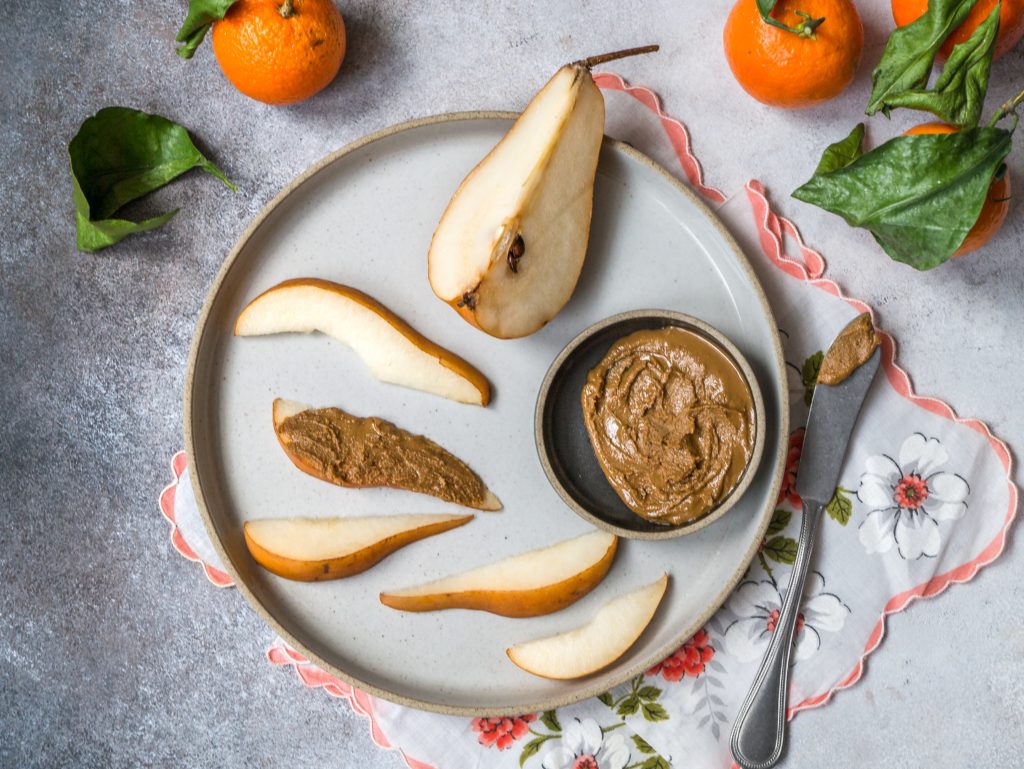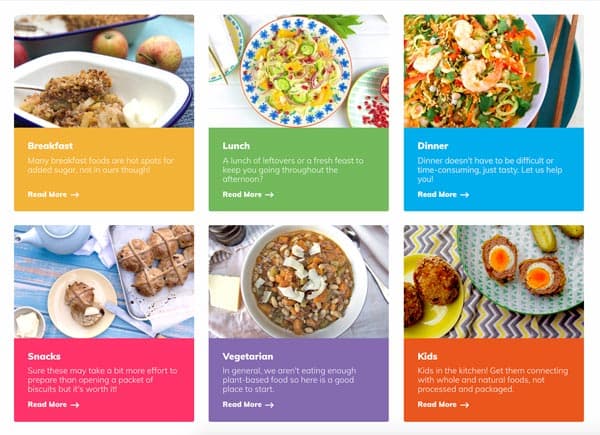Blog
Snack mindfully

Mid-afternoon is here and the chocolate craving steam train is ready to steer you toward your nearest 7-Eleven. Despite all your best intentions, you jump on board, and for a moment you feel the energy-slump lift, only to slump again shortly after.
Sustaining energy throughout a day can be a challenge. We have demanding lives and expect a lot of our minds and bodies. Food is fuel for our body, and what we choose to eat and drink will profoundly impact how we function and cope at different times of the day.
It can also determine if, what, and how often, we reach for a snack.
To snack or not to snack
Before we go on, we should touch on our tendency as a culture to snack.
While some people operate better with smaller meals and snacks in between, others feel more focused and energised sticking to 2-3 solid, wholesome meals over a day.
So, to snack or not to snack? We say listen to your body’s cues and do what works best for you.
Essentially, snack mindfully.
If you do snack, be aware of the quality of the foods you choose to lean on to get through a day and how they make you feel.
Limit the not-so-good-stuff – that ultra-processed, sugar-laden, intensely salted, and deep-fried junk – and focus on consuming mostly real, whole foods. Observe what, when, and how often you eat and work out what is optimal for you to sustain energy throughout the day while minimising cravings for overly sweet or junk food and drink.
Energy maintenance and snacking
To optimise output and maintain a steady flow of energy throughout the day, we want to work toward stabilising the dramatic highs and lows of blood glucose, insulin, and cortisol levels, which in part are driven by our food choices.
Poor quality food and drink only perpetuate the extreme ups and downs, followed by the desire to reach for quick, cheap sources of energy for a pick-me-up (i.e. sugar-laden snacks). This roller coaster is inflammatory and damaging to the body.
When it comes to food choices, here are our tips to help limit these fluctuations, maintain energy throughout each day, and snack mindfully!
TIP 1: Eat mostly real, whole nutrient-dense food
Broadly, the simplest way to guide healthy eating and sustained energy is to ensure that both main meals and snacks include sources of whole food healthy fats, quality protein, and fibre.
Doing this can also result in eating less overall, reducing the dependency on snacks as you feel more satisfied and energised from the previous meal.
Healthy fats are our friends, and they are YUM! Consume fat from whole or minimally processed foods to satiate and offer a slow, steady source of energy alternative to added or free sugars.
Think: avocado, nuts, seeds, nut/seed butter, olives, oily fish, and high-quality oils such as first cold-pressed olive, coconut, flaxseed, avocado, and macadamia.
Protein also offers a sustained source of energy. It is satisfying and essential to countless body functions, including muscle synthesis, immunity, digestion, mood, and sleep to name a few.
Think: legumes, beans, nuts, seeds, eggs, and animal products.
Fibre is great for keeping one fuller for longer. Fibre-rich, low-glycaemic index (GI) foods offer a slow release of energy, while providing food for the microbes that reside in our intestinal (gut) microbiome. Keeping those bugs happy keeps many aspects of our health happy, so enjoying plenty of fibre is a win-win!
Think: vegetables, fruit, legumes, nuts, seeds, and some low-GI whole grains and seeds such as brown rice, quinoa, buckwheat, amaranth, millet, barley, and wheat berries.
TIP 2: Be prepared
Quit relying on the vending machine for your snack supply. Instead, make your favourite, whole food snacks ahead of time and have them on hand to help you keep on keeping on when energy begins to wane.
A little prep – such as baking, cutting, or separating serves into small portable containers – can go a long way!
Think apple slices with tahini or 100% nut butter, a slice of frittata, baked spiced chickpeas, homemade popcorn, veggies sticks or seed crackers and hummus or cheese, or the old faithful: nuts, seeds and a piece of fresh fruit.
Also ensure you are drinking enough water, and that your breakfast and lunches are satisfyingly nutritious, and try not to eat for several hours between meals and your wee snack.
TIP 3: Check lifestyle factors
Be aware of other factors that influence the tendency to snack.
Do you really need food? It may be your body is thirsty (not hungry), needs some fresh air and blood flow (to revive brain activity), or needs better quality sleep (poor sleep leads to not-so-great food choices the next day). Do you tend to snack more when bored or stressed?
Be mindful and observe what is driving your snacking desires, and begin to kick the habit of reaching for the processed, sugary, unhealthy stuff.
Snack well and carry on
Ultimately, snacking doesn’t have to be unhealthy. You just need to be prepared for when a snack-attack strikes!
Kick the old habit of depending on the vending machine, corner store, or other sources of cheap, sugary junk. Revive your stash of snacks with more nourishing, yet tasty, alternatives to keep you keeping on. Check out our recipes and Low Sugar Snacks ebook for inspiration!
Remember to ask yourself if you really need the snack, and be wary of those seemingly healthy snack foods that are often loaded with the sweet stuff.
Had a ‘snackcident’? Do not fret! Drink some water, move on, and choose something more healthful and nourishing at your next meal.
By Angela Johnson (BHSC Nut. Med)











